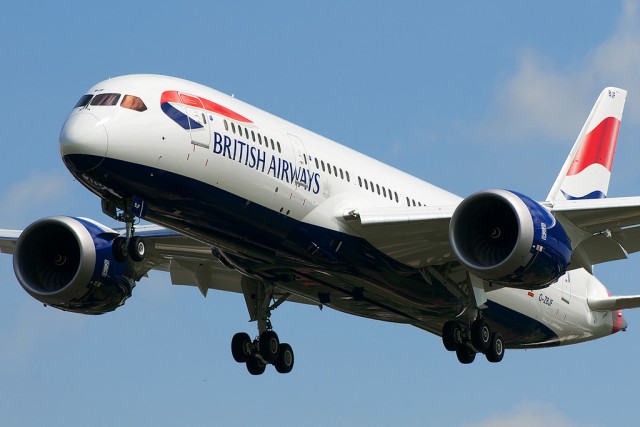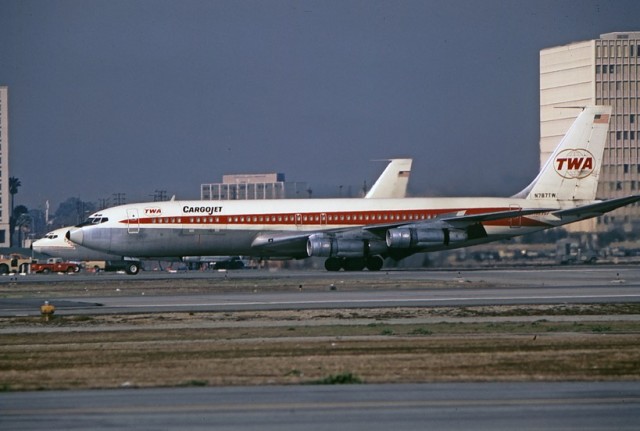
A TWA Boeing 707 freighter on Runway 25R at LAX – Photo: Jon Proctor
Here’s a little background about a wonderful encounter I had with racing legend Andy Granatelli in the late 1970’s. At that time, I flew for Trans World Airlines on their Boeing 707 and 727 aircraft.
In April and May of 1978, my regular assignment (trips for the month) was to fly a 707 freighter from Los Angeles to Indianapolis. Typically, we would launch very late in the evening around midnight, and arrive in Indy at around 6:00 am local time. A day-and-a-half later, we’d fly a return flight to Los Angeles at 6 pm. That gave us a 36-hour layover in Indy. On our first trip of the month, I got to the airport quite early, as I had been on vacation the previous month and had lots of accumulated paperwork to attend to. At about nine in the evening, I bummed a ride with a TWA mechanic from the hangar to the TWA cargo facility on the other side of the airport – probably the most harrowing part of my three-day trip.
As we arrived at the air freight terminal, I noticed two large box vans – both painted with the legendary STP logo. The TWA mechanic and I walked over to the vans and looked inside… one was filled with tires, crated engines, tool boxes, and other motor racing equipment. The second van had two Indy 500 race cars inside!
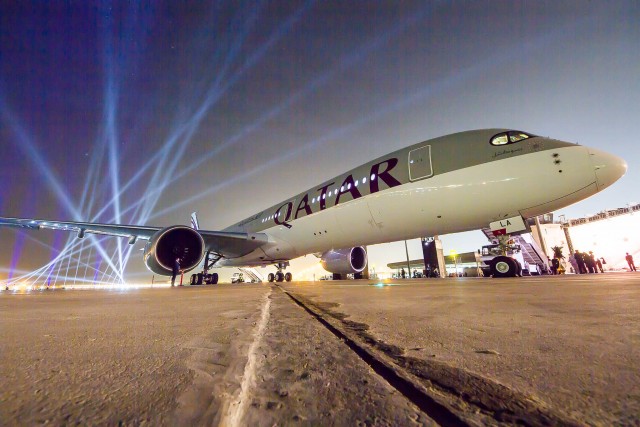
The Qatar Airways A350, simply beautiful – Photo: Jacob Pfleger | AirlineReporter
Ever since first seeing the Airbus A350 at the Singapore Airshow last year, I have had a soft spot for this aircraft. I was over the moon with excitement when the news came that I had been invited by Qatar Airways to cover the inauguration ceremony in Doha prior to its inaugural flight to Frankfurt on the 15th of January.
The aircraft had been officially handed over to Qatar Airways on the 22nd of December, 2014, in a special delivery ceremony hosted by Airbus.
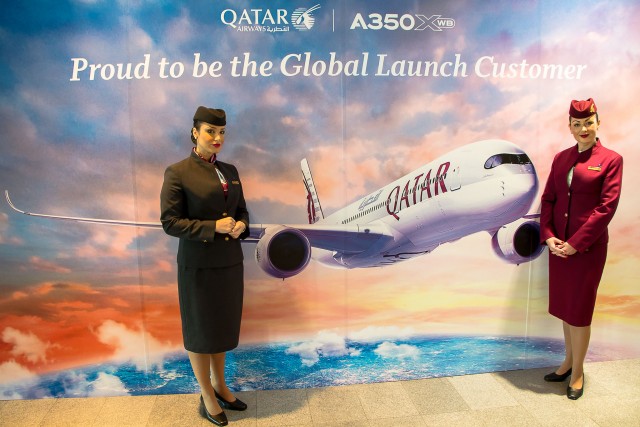
A nice welcome at the press conference – Photo: Jacob Pfleger | AirlineReporter
The inauguration ceremony in Doha was accompanied by much fanfare, including a fun-filled three-day activity program for over 130 members of media from all over the world. Although there was no demonstration flight, like the event in Toulouse, it was still a very exciting and fun event to be part of.
The below photo report covers not only the official press conference and aircraft tour, but also the rather extravagant evening inauguration ceremony. This ceremony was one of the most impressive spectacles I had ever witnessed, and it was magnificently organized, right down to the choreographed light show on the aircraft. For the best viewing experience, be sure to click on each photo for the full resolution image to be displayed.
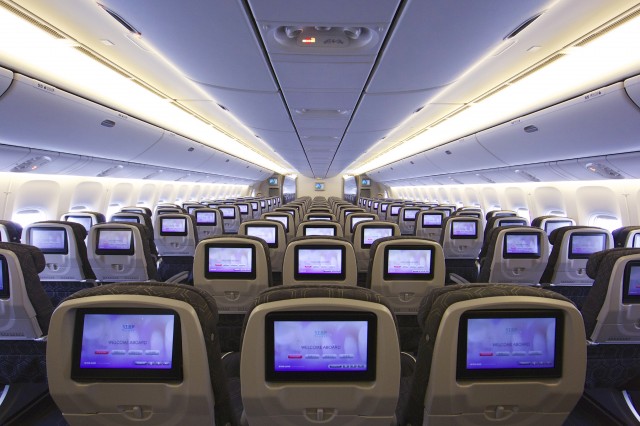
Economy class in EVA’s new 777 is still nine abreast – Photo: EVA Airline
You’ve really got to hand it to our friends over at Runway Girl Network. Earlier in the week, I read an article by Gavin Werbeloff that made me shout gleefully (something a lot more impolite than “YES! This man is correct! Give him cookies and accolades!”) I actually shouted it out loud and confused my wife.
Regardless, it sparked my creativity. I’m leading up to a point here- so do bear with me.
It seems to me that the industry gets obsessed with fads. I’m so old that the fad I was beginning to notice was going 10Y on 777s. The thing is, I never saw it as a move purely designed to increase unit revenue while decreasing unit cost. I always saw it as a way of psychological warfare directed at frequent flyers. As a professor drilled into my skull, it’s an airline’s duty to extract as much money from each customer as possible.
Frequent flyers often fly on someone else’s money – part of me honestly believes that making economy into an insufferable torture space was designed to increase premium revenues by inciting revolts within corporate middle-management to force the purchase of premium economy or higher fares. It never happened, but the results are the same. Economy cabins are denser and more miserable than ever.

UPDATE Jan 21st: Tickets will go on sale at 4:00pm PST on Monday January 26, 2015. We are set to release more details on Thursday, January 22nd on the final schedule, what tickets will be offered and how the two dates will be organized.
UPDATE Jan 22nd: A new page has been created with much more detail about the event. Most has been removed from this page.
Thank you all so much for patiently waiting on details for Aviation Geek Fest Seattle 2015 (#AGF15), taking place in Seattle, WA on February 21st and 22nd. Believe me, there have been many people working behind the scenes (yay Future of Flight) to make this year’s event amazing and a little different — I am really excited. We just hit some snags, which delayed our timeline, but the wait will be worthwhile.
What is Aviation Geek Fest? It is a two-day aviation extravaganza that let’s you get access to things that the general public cannot. Check out our schedule last year for AGF14 and then check out the story covering what happened during the event.
I know many of you are anxious about getting your tickets and they will be on sale soon. Of course there are still some unanswered questions, but this is what we can share so far:
People who love to fly don’t fly economy.
For the past several months, my husband has pitched the idea of AirlineReporter readers likely being interested in a trip report written by a ’œnormal person’ like me. In this case, ’œnormal’ is defined as someone who doesn’t choose flights based on the aircraft model, or speak in cabin class codes (e.g. Y, J, M, F). I am not an AvGeek and I am sort of proud of it (although I still love you all).
My husband and I fly together several times a year and, when we do, I am able to piggyback off of his status and occasionally get a free upgrade to business/first for domestic flights. However, the ’œopportunity’ for me to fly long-haul economy eventually arose when I needed to fly from Seattle to Hyderabad, India for work.
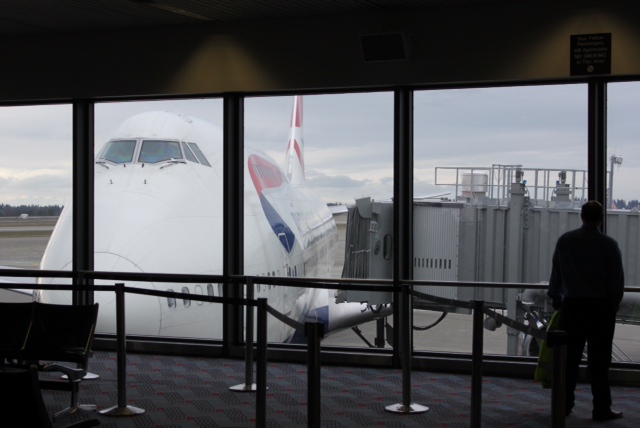
British Airways 747 seen at Seattle-Tacoma International Airport flying to London – Photo: Benjamin Whalen | AirlineReporter
To establish some context, I consider myself to be an experienced economy flier. Before meeting my husband and learning of the world of mileage runners and aviation geekdom, I had several flights between the US and Europe to visit distant relatives, as well as a semester studying abroad where I tried to fly to another city every other weekend. In all of these cases, I only ever flew economy, and have fond memories of being nestled under a blanket and binge-watching in-flight entertainment on a few good-length flights. Even though I didn’t pay much attention to the seat dimensions, I enjoyed flying and viewed it as a chance for peace, quiet, and self-reflection.
However, my flight to and from India was going to be much more rigorous than my previous travels. I had two back-to-back ten-hour flights in British Airways’ economy class, traveling from SEA>LHR>HYD. To top it off, I needed to do the reciprocal leg within five days of my arrival.





